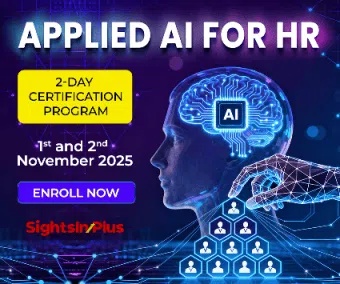It’s an accepted fact, that a fast-evolving business climate in terms of performance, productivity and profits is going to dictate the norms of new-age employee relations. And in the backdrop of this fact, the challenge is to create an engaged workplace environment for better employee relations.
“Engagement is the emotional connect that employees have with their organizations. Highly engaged employees feel empowered, experience a sense of ownership, and are instrumental in building harmonious employee relations”
Engaging employees matter since this goes a long way in reducing absenteeism, improving productivity and reducing safety incidents at workplaces. These employees work in creating a more positive work environment and improve customer experience than those who are disengaged.
Employee engagement depends not just on the workplace but on the relationship that is built at the workplace. The real challenge for the organization lies in maintaining the same level of commitment and enthusiasm throughout their careers.
This is where technology plays an important role in understanding the employees and their commitment to the workplace. New human resource portals, cloud technologies, and artificial intelligence have provided huge amounts of data that would help analyze their employees and use that information more productively.
Empirical data shows that organizations need to utilize technology to improve employee engagement:
- The Bureau of National Affairs reports that $11 billion is lost every year due to employee turnover, which increases the risk of employee disengagement.
- A Gallup report in 2018 showed that worldwide only 15% of employees were engaged at work. In the U.S. the figures were better with nearly 32% reporting that they were enthusiastic and involved in their day-to-day tasks.
- A Deloitte Human Capital Trends Report 2017 showed that nearly 48% of the surveyed companies termed employee engagement as “very important”.
- A Tower Perin report showed that businesses that had poor employee engagement levels experienced a 33% drop in operating income and an 11% decrease in earnings growth.
The challenge of improving the engagement levels of its employees requires the companies to change their approach in creating and delivering the employee experience. This demands that HR professionals change from being mere talent spotters to employee experience facilitators. This type of change is required among senior-level managers and internal corporate communicators as well. But how does employee engagement or the lack of it impact organizations?
IMPACT ON FINANCES
Employee disengagement hurts companies, shareholders and ultimately their bottom line. For example, in the case of businesses, activities that can demonstrate a clear ROI have a better chance of getting approval from senior management and the board of directors.
PRODUCTIVITY AND RETENTION
A report from the Workplace Resource Foundation found that 38 percent of highly engaged employees were more likely to have better-than-average productivity levels than their peers. High attrition rates can impact employee morale and negatively impact the recruitment of new resources.
WORK CULTURE ISSUES
One of the foremost impacts of employee disengagement is the potential social divides between the management and the employees. The perception of “them Vs us” can impact working relationships and distance employees from the organization’s overall goals and aims. The resulting breakdown of communication between the management and employees can impact productivity and, ultimately, the finances of the organization.
But before the organization begins working on creating better methods of employee engagement, they need to understand the reasons for disengagement.
Remote Workers Feel Left Out
With the rising number of mobile workers across different geographical locations, it becomes tough to facilitate communication between employees in the company’s distributed network. When organizations fail to use a systematic approach to facilitate two-way communication, the chances of disengagement among employees increases. Access to mobile intranet and means to reach out to colleagues and managers can help mitigate these issues.
Disconnect With Company Goals & Mission
One of the reasons for disengagement is employee disconnect or lack of understanding with the overall strategy, goals, and mission of the organization. Employees will feel a sense of belonging if they feel they have a personal stake in helping the company achieve its mission. This is accentuated by a recent study from Chris Zook of Bain found that only 40 percent of the employees knew about their company’s goals and mission.
Lack Of Common Information Platform
Every organization needs to provide a two-way channel for employees to communicate their ideas and thoughts as well as receive information or announcements from the senior management. Without a platform in place, it is highly likely that employees will soon lose interest in their work and soon look for an exit from the organization.
The way forward would be for organizations to use mobile-enabled technology which would facilitate easy adoption by employees. This, in turn, will ensure engaging user experience and help the job get done faster and more efficiently.
MOBILE APPS
Mobile applications are ideal for employees working from remote locations or for those always on the move. Mobile applications can reach the entire workforce, obtain feedback and provide insight on employee engagement-related activities. Integrated mobile engagement solutions can help communicate to and between employees and senior management from any location. It can also be used to share feedback and collaborate between cross-function teams. For example:
- Employees can use mobile phones to access company video feeds from Vimeo and YouTube.
- Employee mobile apps like StaffConnect allows employees to access continuous updates of company news any time, any place since employers can broadcast all the announcements directly to employees.
DIGITIZED HR MANAGEMENT SYSTEMS
A computerized HR information system consists of a fully-integrated, Web application that contains databases, services, information, tools, and transaction. Computerized HR systems facilitate in improving effectiveness and reducing overall operational costs. This helps in determining future training needs as well as determining the performance of employees who will be successful in the organization. HRMS also help the HR personnel to analyze the productivity levels to enhance the productivity improvement programs. Discipline driven by transparent processes and systems, enabled by technology goes a long way in creating better employee relations at the workplace.
Conclusion
Organizations can longer rely on mere speculation to piece together data on employee engagement and employee relations. It is time for organizations to use technology as a key component of their employee engagement and employee relation strategy.



